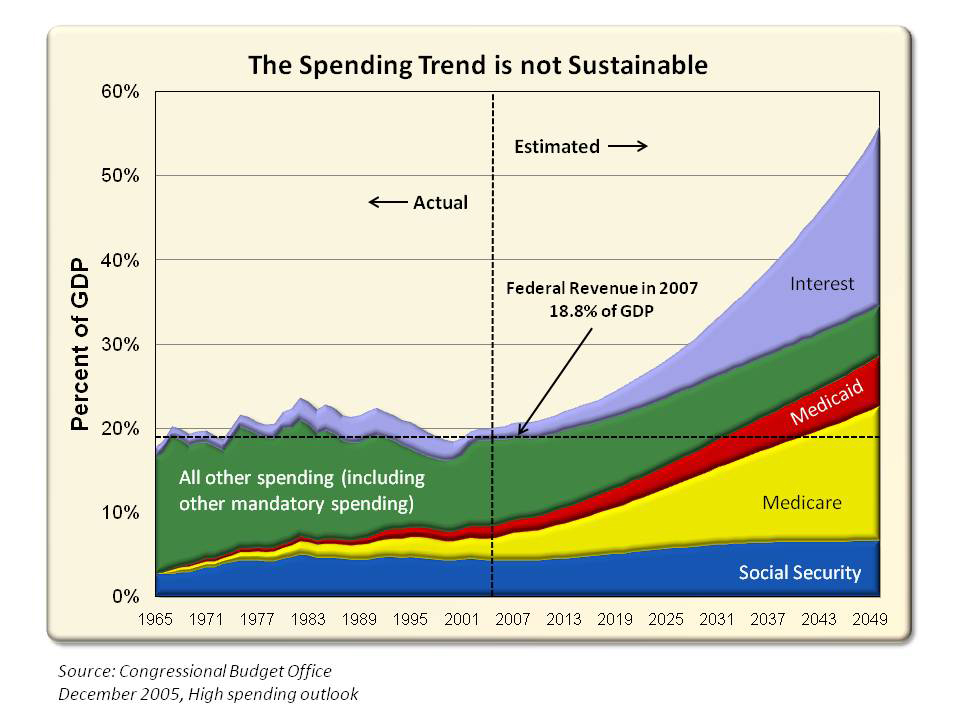

Decreases funding for the United States Forest Service by $118 million.

Includes the elimination of food for education and water and wastewater loan programs. The proposed 2018 budget includes $54 billion in cuts to federal departments, and a corresponding increase in defense and military spending. CBO estimated that the debt held by the public, the major subset of the national debt, would rise from $14.168T (77.0% GDP) in 2016 to $22.337T (79.8% GDP) in 2027 under the President's budget.If all of President Trump's proposals were implemented, CBO estimated that the sum of the deficits (debt increases) for the 2018–2027 period would be reduced by $3.276T, resulting in $6.836T in total debt added over the period. Deficits: CBO estimated that based on the policies in place as of the start of the Trump administration, the debt increase over the 2018–2027 period would be $10.112T.Trump's budget proposal was not sufficiently specific to score other tax proposals these were simply described as "deficit neutral" by the Administration. Revenues would be reduced by $1 trillion, mainly by repealing the ACA, which had applied higher tax rates to the top 5% of income earners.Other discretionary spending (cabinet departments) would be reduced by $1.548T. This includes reduced spending of $752 billion for overseas contingency operations (defense spending in Afghanistan and other foreign countries), which is partially offset by other increases in defense spending of $448B, for a net defense cut of $304B. Discretionary spending: The budget cuts discretionary spending by a net $1.851 trillion over the 2018–2027 period.These savings would be partially offset by $200B in additional infrastructure investment. This includes reduced spending of $1.891T for healthcare, mainly due to the proposed repeal and replacement of the Affordable Care Act (ACA/Obamacare) $238 billion (B) in income security ("welfare") and $100 billion in reduced subsidies for student loans. Mandatory spending: The budget cuts mandatory spending by a net $2.033 trillion (T) over the 2018–2027 period.The Congressional Budget Office reported its evaluation of the budget on July 13, 2017, including its effects over the 2018–2027 period. CBO chart explaining the impact of the 2018 budget on spending, tax revenue, and deficits over the 2018–2027 periods


 0 kommentar(er)
0 kommentar(er)
